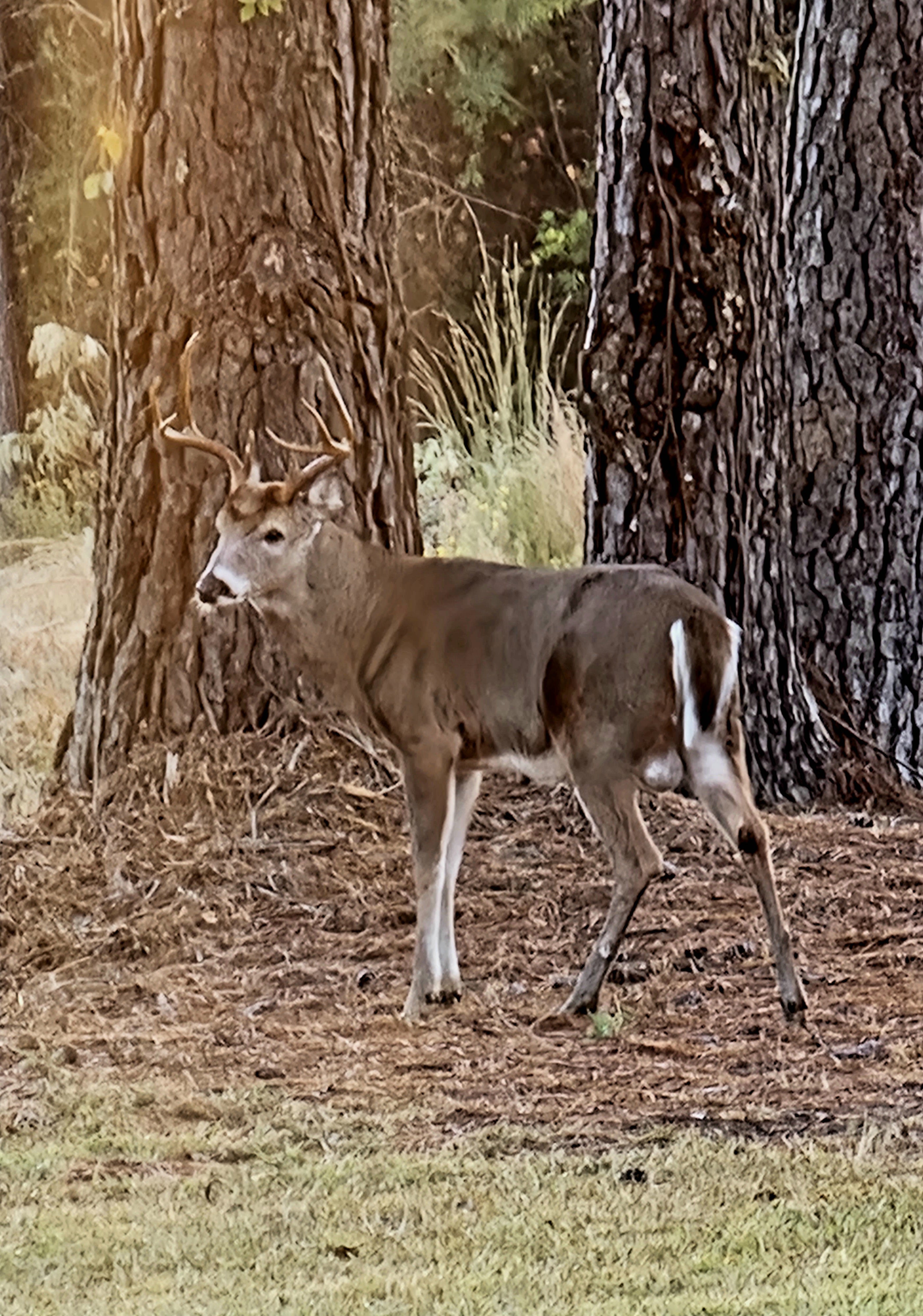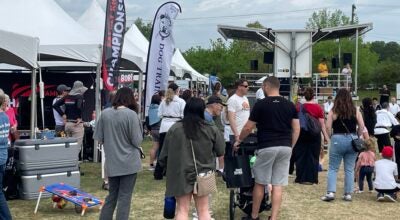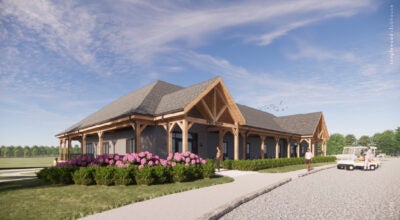Wanna step outside? Mating season
Published 12:00 am Thursday, October 26, 2023

- An eight-point buck meanders through Dan Kibler's family farm in Georgia. - Photo by Dan Kibler
|
Getting your Trinity Audio player ready...
|
By Dan Kibler
For the Clemmons Courier
For about 15 years, beginning in around 1995, I have made an annual November trek to the farm in central Georgia where my father was raised.
The reason? To hunt white-tailed deer. I killed the first one ever taken on that 640-acre farm, a 4-point buck, on Thanksgiving afternoon in 1976, my junior year in college. Deer were a fairly new item back then. My father doesn’t remember ever seeing one from the time the family moved to the farm in 1941 until the early 1970s. There were plenty of quail and rabbits, but no deer and turkeys — my, have the times changed.
About 1970, my physician uncle bought the place, which the family had farmed as tenants until around 1960, and in the first year or two, he cut 400 acres of timber and replanted it mostly in pines. Later in life, I would understand that young pine plantations were essentially cutovers, which were essentially deer nurseries — and having tremendous habitat in which to thrive, the deer population exploded there in the 1980s.
My dad started hunting the place in the late 1980s with some of his friends, and they quickly decided to try and manage it for bigger bucks, so they put an 8-point minimum in place. Nobody killed any bucks smaller than 8-pointers unless there’s some kind of cull buck that needs to be removed from the herd.
By the time we had to quit hunting around 2010 — reasons are unimportant — we had at least four dozen 8-point racks tacked to the walls of the “trophy room,” with a fox squirrel being stalked by a bobcat, both mounted on a limb from a pecan tree just outside the house.
I figured I understood deer by that time, and I’m almost never surprised by some of the things they do, from walking through my back yard within the city limits to bouncing across the road just in front of my vehicle in broad daylight.
Until this past Saturday morning, that is.
We were in Georgia for a “celebration of life” for my uncle, who died a couple of weeks ago just short of 90. We were staying in the old farmhouse, my son, brother and I. My son was sleeping in the front bedroom, and it was closing in on 8 a.m. when he rushed into my room and awakened me — I was already sort of stirring. He rushed me into his room, pointed out the window and asked me if I could believe my eyes.
It took these old eyes a little while to focus, to figure out which tree he was pointing at and where I was supposed to be looking, but eventually I saw him, a big 8-point buck — it would have been one of the two or three biggest we’d ever killed there — strolling through the side yard.
“I woke up and looked out the window, and there he was, walking right past the air-conditioning unit,” my son said, pointing to the metal box about 15 feet from the house.
We watched him, noting how black his hocks were and how thick his neck had become, as he picked one doe out of a quartet about 50 yards in front of him, cut her away from the herd and followed her into a grove of pines, across a logging road and into what we used to call the “little pasture.”
I would have given anything to have seen a buck that big from any of the 20+ stands on the property when we were actively hunting it — much less one walking through the side yard, almost in the shadow of the house.
It goes to show that when November approaches and arrives, deer don’t act right — they are liable to do just about anything when their reproductive juices start flowing.
And the intelligent folks at the N.C. Wildlife Resources Commission have taken that into consideration when setting deer seasons across the state. They put the greatest number of hunters in the woods at a time when they have the best chance of catching an old buck with its guard down — the way this one was acting this past Saturday.
Blackpowder season will open on Saturday in the Piedmont for a two-week run, followed by gun season through New Year’s Day. Blackpowder will follow in the northwestern corner of the state beginning Nov. 4 for two weeks, followed by gun season.
According to a map on the Commission’s website (www.ncwildlife.org), the estimated peak of the deer breeding season varies across the state, generally beginning around Nov. 1 along the coast and moving from east-to-west across the state, getting a few days later every hundred miles or so you travel. Biologists have determined the dates by sampling deer over the years, looking at the fetuses of does that are sampled in the spring, measuring and back-dating them by size to determine an approximate date of conception.
In the southern Piedmont, the peak ranges from Nov. 12 in Moore County to Nov. 14 in Montgomery, Nov. 15 in Richmond, Nov. 16 in Stanly, Nov. 18 in Union and Nov. 19 in Mecklenburg. In the northwestern corner of the state, it ranges from Nov. 14 in Stokes to Nov. 18 in Ashe, Nov. 19 in Watauga and Forsyth, Nov. 20 in Iredell, Nov. 21 in Davie, all the way to Nov. 30 in Wilkes.
Deer are most active in the week or two before the peak of the breeding season, aka, the rut, so cranking things up around Nov. 1 is a perfect strategy for giving hunters their best chances at filling one or all of their six annual deer tags.
I will be sighting in my muzzleloader and my rifle in the next few days so I’ll be ready when the time comes — and not just if a big one wanders through the back yard, eating the last, straggling green beans in my garden.



